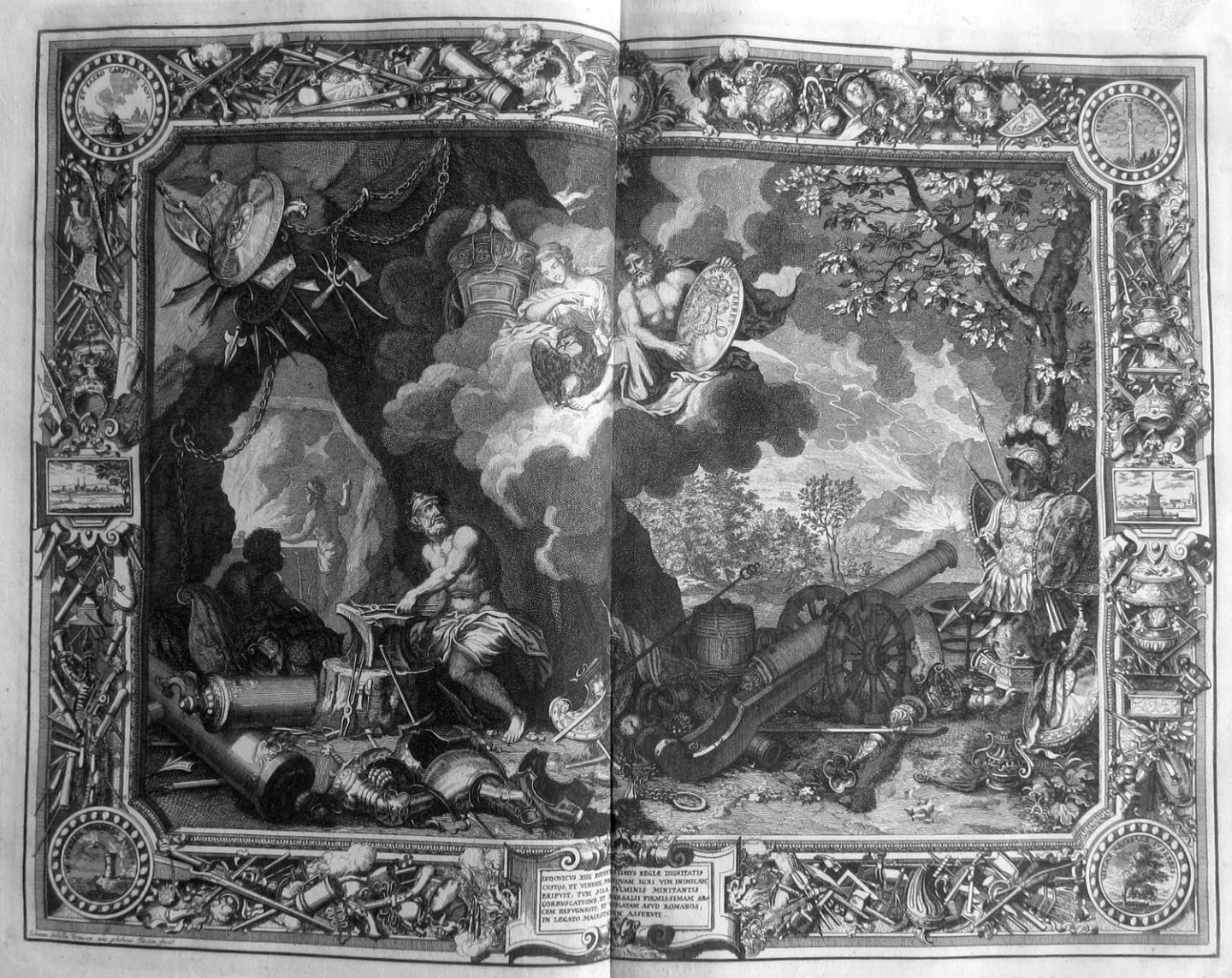Johanna Sibylla Küsel-Kraus
In the seventeenth century it was common for children to learn their parents' trade and for workshops to continue for generations. The long line of ancestors and the high-ranking artistic environment in which Johanna Sibylla Küsel-Kraus grew up are unusually noteworthy. The Augsburg engraver and publisher Melchior Küsel was her father, the imperial court engraver Matthäus Küsel her uncle. Matthäus Merian the Elder was her grandfather, Johann Theodor de Bry was her great-grandfather, Theodor de Bry, the founder of the de Bry-Merian dynasty of engravers and publishers was her great-great-grandfather. The flower and still life painter Jacob Marell, his stepdaughter Maria Sibylla Merian, her husband Johann Andreas Graff and both, Christoph Le Blon the elder and the younger, as well as the portraitist, engraver and publisher Matthäus Merian the Younger, were among her relatives.
As long and extensive as Johanna Sibylla Küsel-Kraus's line of ancestors was, as diverse were the artistic influences that were received, transformed and passed on over generations. The term "Augsburg - picture factory of Europe", to borrow a phrasing launched by John Roger Paas, has intensified the focus on the Augsburg engravers and publishers, emphasising their outstanding efficiency, but at the same time also helping to recognise Augsburg as a centre where influences from different regions of Europe flowed together, were processed and spread again from there. At the end of the sixteenth and in the first decades of the seventeeth century, Dominicus Custos and his descendants brought in particular Dutch and Italian models into the imperial city's printmaking production. After the end of the Thirty Years' War in 1648, French models increasingly found their way into Augsburg printmaking. As Flora Herbert recently pointed out in her PhD, this cultural transfer between France and Germany, particularly between printmakers in Paris and Augsburg, was largely initiated and supported by Melchior Küsel and the Küsel-Kraus workshop.
Johanna Sibylla played a decisive role in both family printmaking enterprises, that of her father Melchior Küsel and the succeeding business of her husband Johann Ulrich Kraus. She was born in Frankfurt in 1650 as the eldest daughter of Melchior Küsel and Maria Magdalena Merian. After Merian's death, the young family moved to Augsburg, where Melchior Küsel opened his own workshop. From about 1665 Johanna Sibylla must have been involved in her father's production. Her first dated works date from 1668. Together with her father she copied prints by Johann Wilhelm Baur, Stefano della Bella, Jacques Callot, Matthäus Merian and Simon Vouet. Later on, the workshop's spectrum expanded to include more French models, especially after Jean Lepautre and Sébastien Leclerc, the "Graveur du Roi" of Louis XIV. After the death of Melchior Küsel in 1683, she married his student Johann Ulrich Kraus and together they ran one of the most productive and successful printmaking companies in Augsburg, whose product range was based on what Melchior Küsel had started, but was now increasingly dominated by copies based on French models.
The enormous productivity of the Küsel-Kraus printmaking-publishers was due to the impressive manpower available in the workshop, which was in fact predominantly down to womanpower. Johanna Sibylla Küsel-Kraus played a significant role in this production for almost half a century until her death in 1717. However, her importance for the workshop was by no means limited to the production of engravings and etchings. As an experienced and senior engraver she played a major, probably the decisive role, both in the training of her later husband Johann Ulrich Kraus and in the training of her much younger sisters and her cousin, who all together made the impressive output of the workshop possible. These volumes of The New Hollstein German series, are dedicated to the work of these women from the Küsel-Kraus workshop: Johanna Sibylla Küsel-Kraus, Maria Magdalena Küsel, Maria Philippina Küsel and Johanna Christiana Küsel.
A good example of the work of Johanna Sibylla Küsel-Kraus is an allegory of the element of fire which is a copy after Sébastien Leclerc's etching based on a design by the French court painter Charles Le Brun (fig.). It shows the design of a Gobelin tapestry for Louis XIV and is from the edition "Tapisseries du Roy" – after the French suite with the same title. It was the first publication of Johanna Sibylla and her husband’s publishing house and these etchings can certainly be considered Johanna Sibylla's magnum opus, published in Augsburg in 1687. In his introduction to the reader, Johann Ulrich Kraus shows himself impressed by the quality of his wife‘s etchings: "Worbey meine Eheliebste … Ihre subtile Hand angewendet" (Made by the subtle hand of my beloved wife).
Compiler: Jörg Diefenbacher
Editor: Eckhard Leuschner


